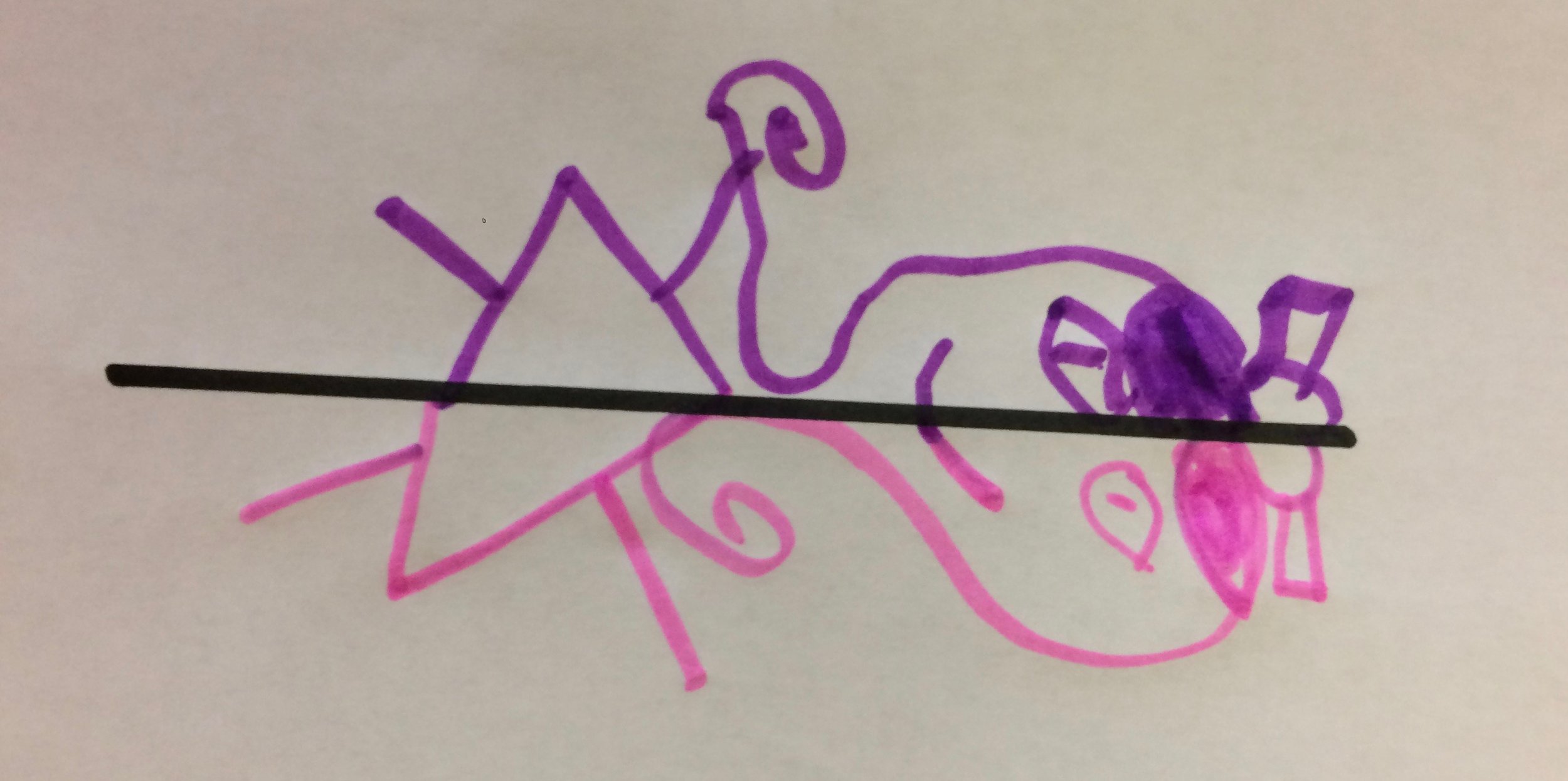Below is the follow-up email I sent to parents after my Math Explorations event at the library.
Hi Parents,
Thank you so much for attending Math Explorations yesterday! I had a blast working with and learning from your kids, and I hope they enjoyed themselves as well. If you were wondering how yesterday's activities connect to school math, or if you want to know how to continue the fun at home, I have some ideas below.
How do mirrors and markers relate to learning math?
Most kids, and most adults, think that math is all about numbers and operations. While numbers and operations are important to math, they are only one piece of the overall puzzle. In fact, math is about exploring the structures of the world, whether those structures are shapes, numbers, or patterns.
My goal for this workshop, and for all future workshops, is to give kids a chance to play with objects whose structure sparks their curiosity. Everything your child did yesterday, from cutting folded paper, to mirror drawing, to playing with the hinged mirrors, contains some inherent symmetry that is worth exploring over time. Just within an hour, the amount of creative and surprising ideas I saw from kids was remarkable.
When kids play with mathematically rich objects, their ideas inevitably get more complex and more creative. Kids work towards a goal, noticing patterns along the way that help them reach their goal, which in turn leads to newer, more challenging ideas.
At first, your child might draw random shapes with mirror drawing, just to see what they look like. But after a bit, she may get an idea. How can she draw a heart? Now she is visualizing the end result and working backwards, improving her spatial reasoning. Or maybe she decides to draw a house, and she starts counting the little grid lines on the paper to make sure both sides of the house are the same length. She might not have noticed the grid lines at first, but after exploring for a few minutes, she is using the structure of the paper to refine her ideas and improve her work.
How can I help my kids explore symmetry at home?
The best thing you can do for your kids is to get out some paper, some scissors, some markers, and a mirror or two and just let them play. If you want a hinged mirror, here is where I ordered mine for $3 apiece.
While your child is playing, you can offer a suggestion or two, but don't feel that you need to guide them to a specific goal. They will be far more interested in persevering if they are trying to accomplish a goal that they came up with themselves.
The best way I've found to inspire my kids to explore an idea is to ask a question. Instead of saying "look what happens when you cut out a triangle from this paper," you can ask "What happens when you cut out a triangle?" Sometimes they'll take the bait. Sometimes they'll ignore you. That's fine; it just means they are working on a different, more interesting idea.
If your kids are looking for a challenge, though, here is a list of things they can try:
Fold and Cut
-Cut out a square
-Cut out a triangle
-Cut out a star
-Cut out an octagon
Mirror Drawing
-Draw a star
-Draw a person
-Write your name with your good hand and mirror it with your bad hand
-Write your name with your bad hand and mirror it with your good hand
Hinged Mirror and Line
-Make a triangle
-Make a square
-Make a diamond that is not a square
-Make a hexagon
-Make a five-point star
-Make an eight-point star
Okay, this email has gone on far too long. As you can tell, I am really passionate about math! If you have any questions, ideas, or ways to improve the session, please send me an email. I would love to hear your thoughts. Also, if you know of anywhere else that might be interested in this math programming, let me know!
I'm hoping to start a monthly series of these events at Homewood Library in the fall. I'll be sure to email you again when I have a firm date.
Thanks again!





